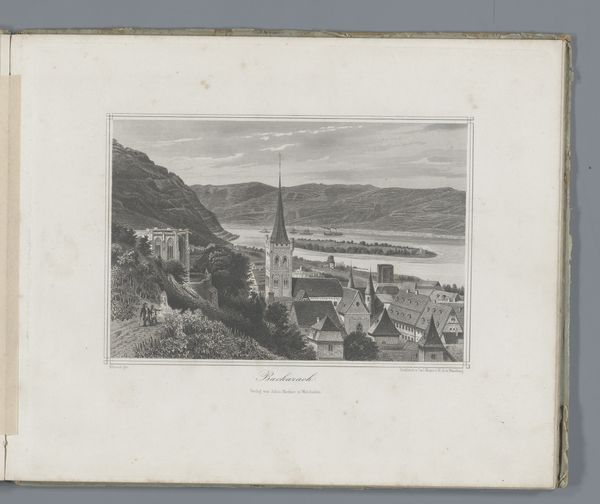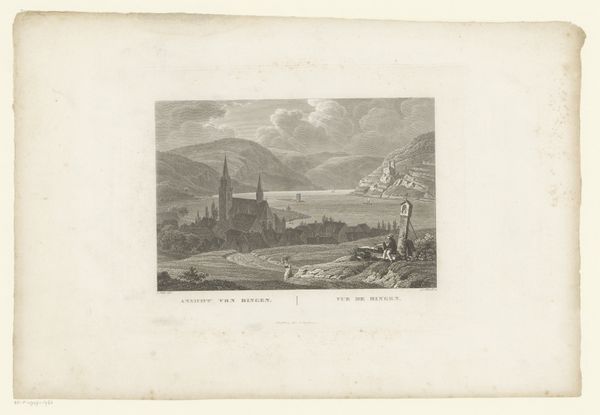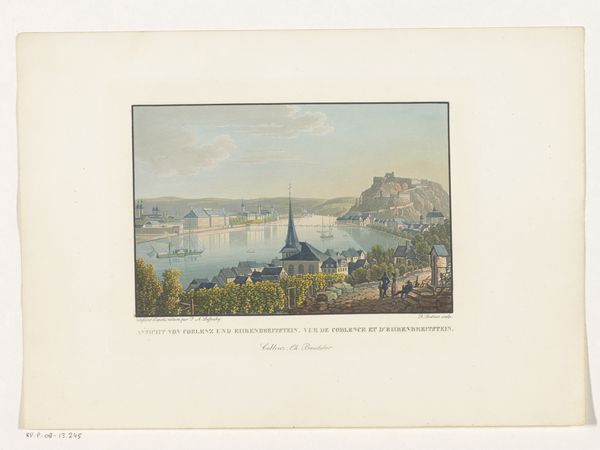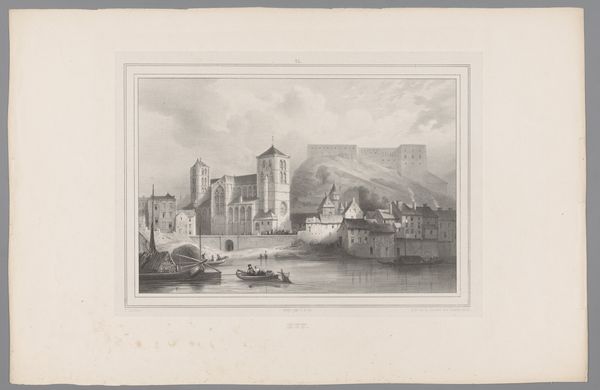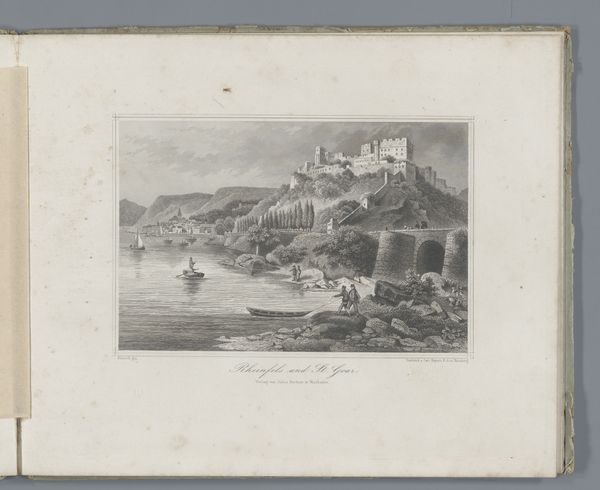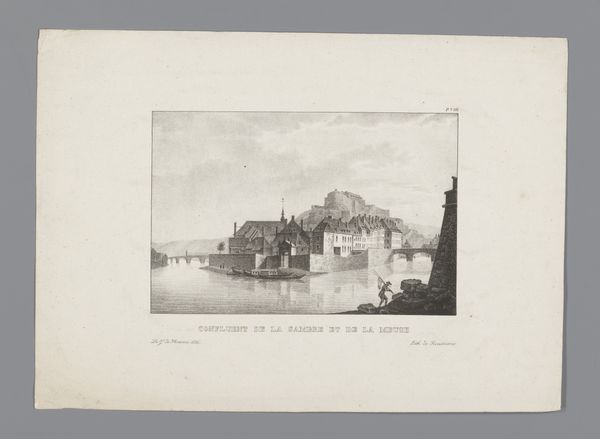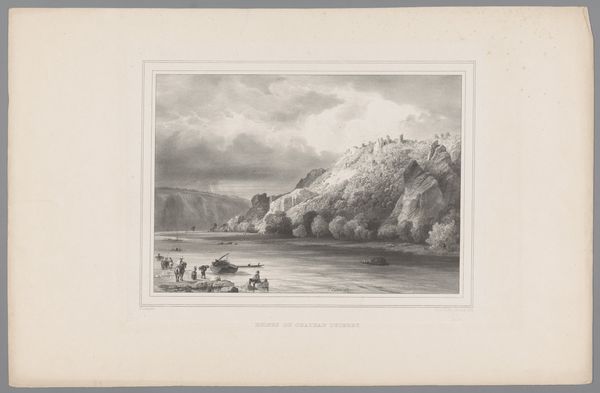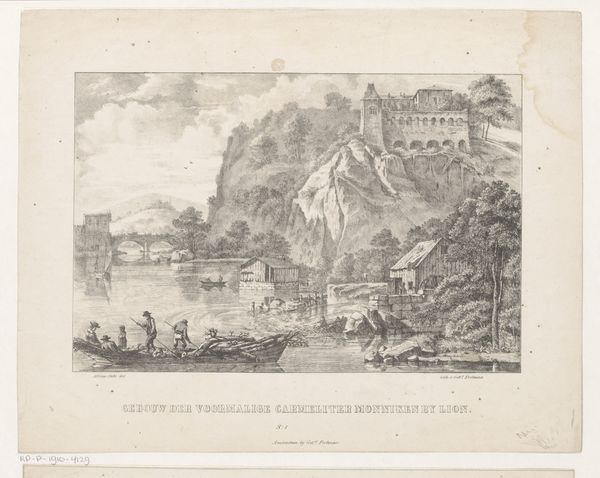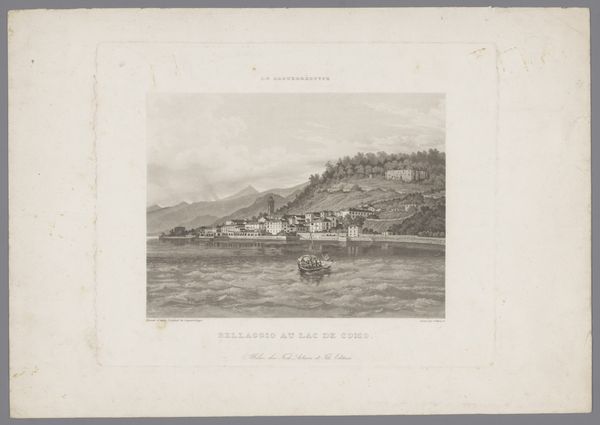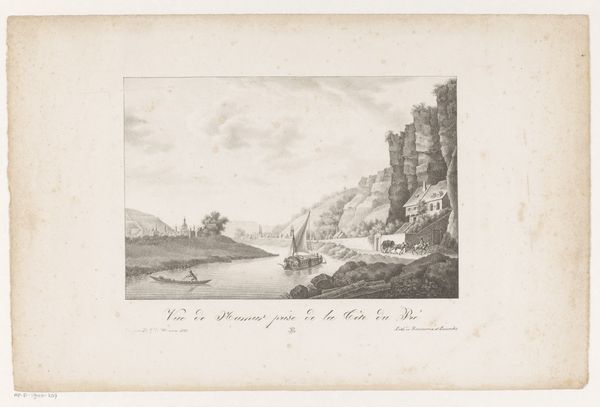
print, engraving
# print
#
landscape
#
river
#
personal sketchbook
#
romanticism
#
cityscape
#
watercolour illustration
#
engraving
Dimensions: height 362 mm, width 547 mm
Copyright: Rijks Museum: Open Domain
Paulus Lauters made this print of Dinant sometime in the mid-19th century. It presents us with a serene view of the town, dominated by the imposing citadel perched high above. Dinant, nestled in Belgium along the Meuse River, carries a weighty history. Consider the era in which Lauters created this image. Belgium had just recently gained its independence; a new national consciousness was being forged. This peaceful image obscures a place strategically vital for centuries, a site of repeated military conflict. What are the politics of such imagery? Artists like Lauters played a role in shaping a new, shared sense of identity. The selective presentation of history and geography—a picturesque Dinant—contributes to the construction of a national narrative. To understand the print better, we might turn to archives, maps, and military records. We can investigate the ways in which art becomes instrumental in defining a place and its people.
Comments
No comments
Be the first to comment and join the conversation on the ultimate creative platform.
